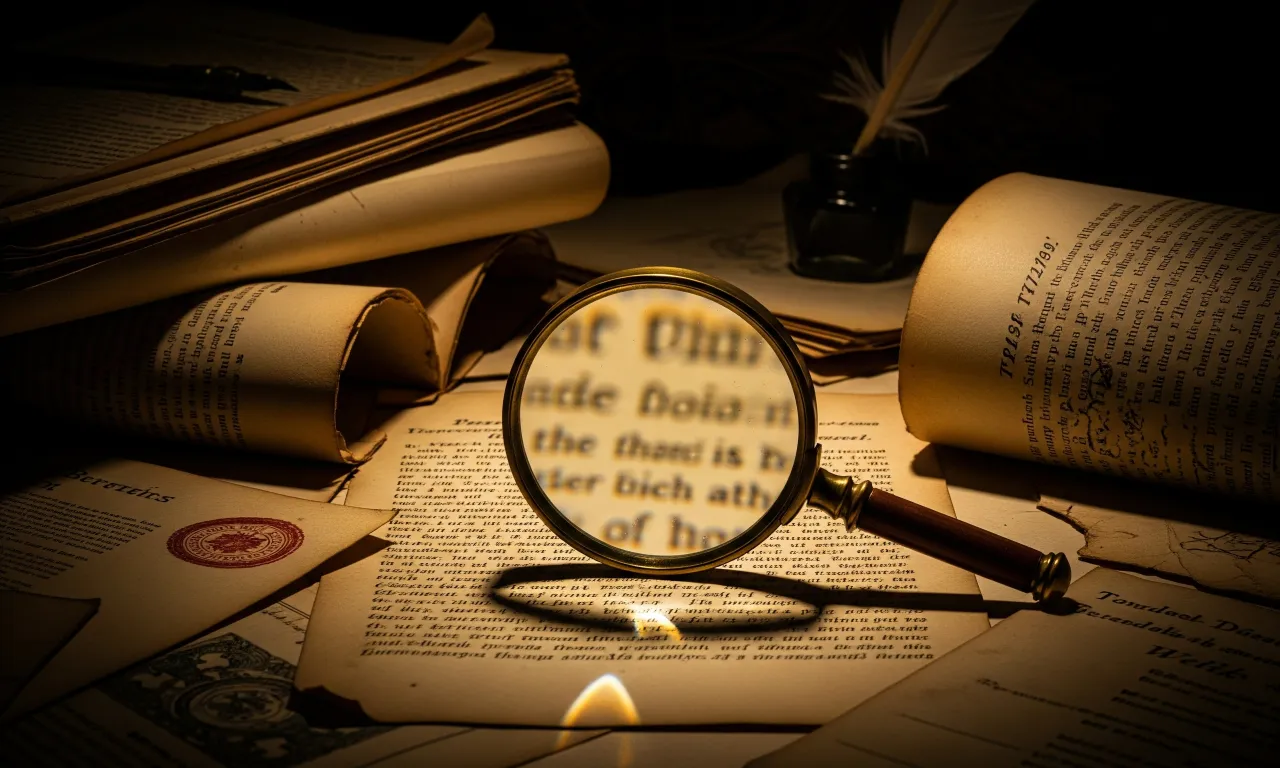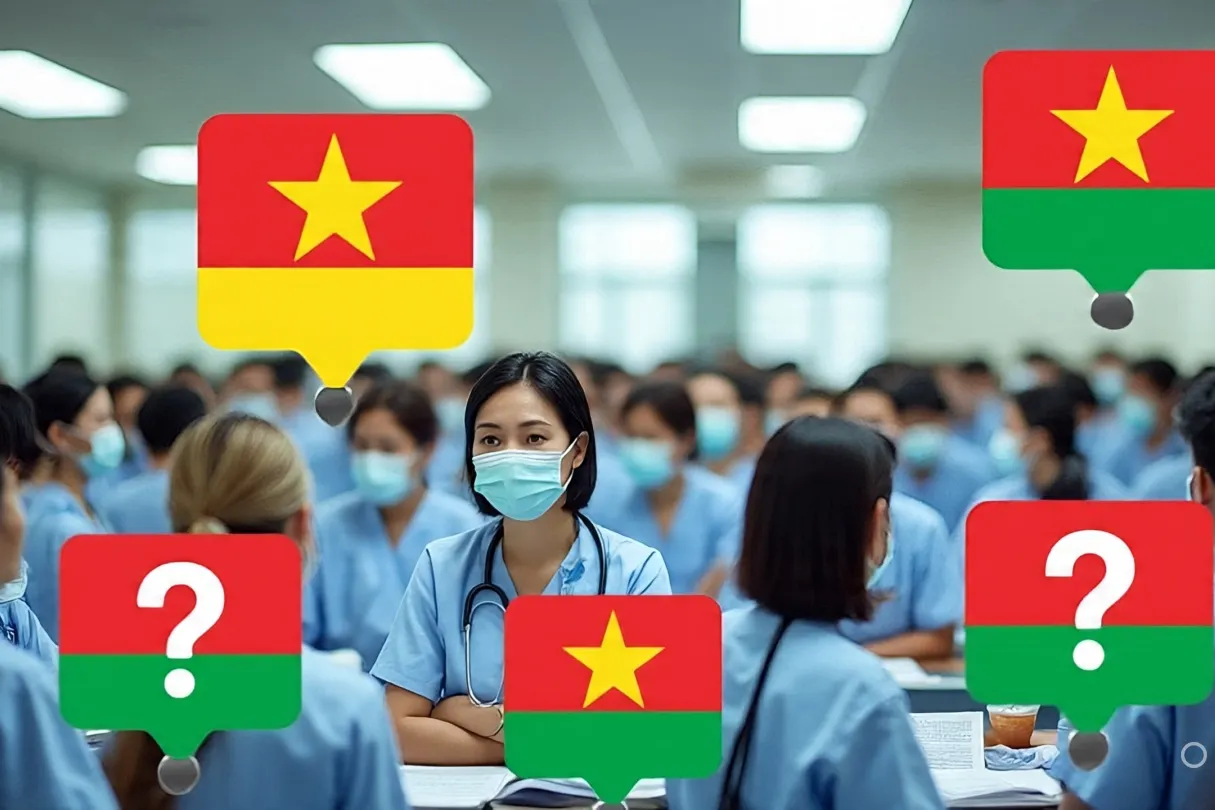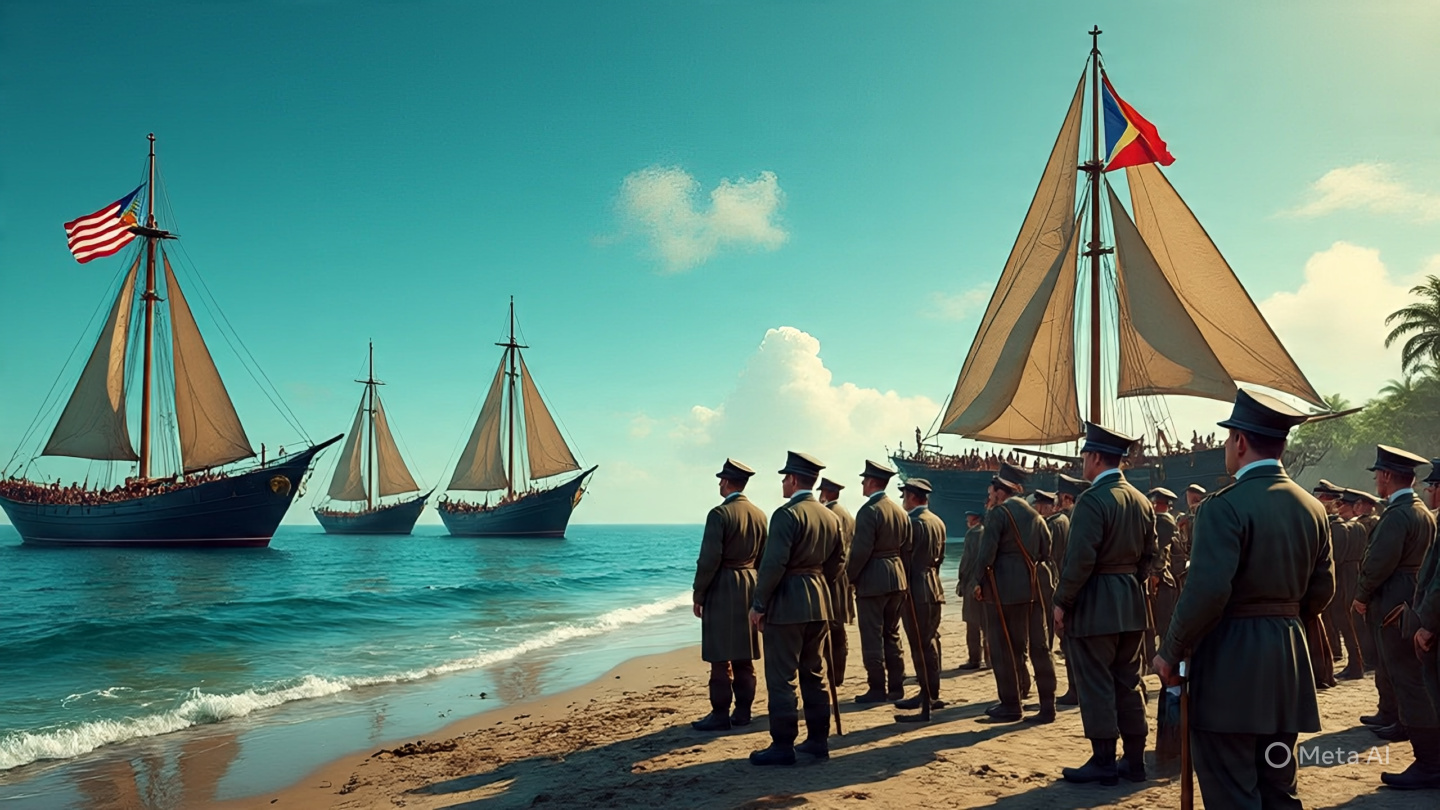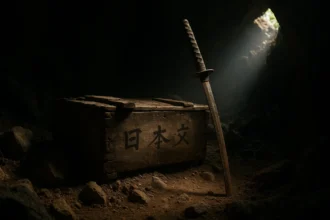🤫 The Unseen Threads: When History Hides Its Face
The story of our nation may not be the whole truth. What if crucial chapters were ripped out of our history books? What if inconvenient facts were buried and uncomfortable truths were swept under the rug? In the Philippines, a country with a long and tumultuous past, the idea of hidden narratives is more than just a conspiracy theory. It is a recurring pattern.
- 🤫 The Unseen Threads: When History Hides Its Face
- 📜 The Erasure of Memory: Notable Historical Secrets
- 🏛️ The Web of Deceit: Political Cover-Ups
- ⛪ The Sacred and the Secret: Cultural & Religious Cover-Ups
- 🎭 The Motives Behind the Veil: Why They Happened
- 💡 The Cracks in the Wall: How Truth Emerged
- 🤫 Top 5 Cover-Ups That Shaped Philippine History
- 🧐 Common Tactics Used to Hide the Truth
- 🕰️ Timeline of Major Alleged Cover-Ups and Their Revelations
- ⚖️ Comparison of Official Narratives vs. Later Findings
- 🤔 FAQs about Historical Cover-Ups
- The Final Verdict: History Demands Truth
From the grand halls of power in Manila to the quiet archives in a provincial capital like Cebu, whispers of suppressed events and altered realities persist. We must ask a profound and unsettling question: What are the greatest cover-ups in Philippine history? What secrets do the dusty archives and the collective memory still hold? This is not a journey into mere speculation. This is an investigative exposé, a deep dive into moments when the truth was deliberately obscured.
📜 The Erasure of Memory: Notable Historical Secrets
History, as they say, is often written by the victors. In the Philippines, a nation with a long colonial past and a turbulent political landscape, many victors have had a hand in shaping the narrative. This has frequently led to the deliberate erasure or downplaying of inconvenient truths. As a result, gaping holes exist in our collective memory. These are the historical secrets, the censored events, and the hidden scandals that continue to haunt our past. The motivations behind these acts of historical suppression are deeply rooted in power and control.
💥 The True Toll of Colonial Resistance
Our history books often portray the Spanish conquest as a relatively smooth process. It includes a few brave but ultimately futile acts of resistance. However, the true extent of indigenous resistance, the brutal Spanish reprisals, and the devastating demographic impact of colonization were often downplayed or outright suppressed. Accounts of fierce battles, widespread famine, and the decimation of indigenous populations due to disease and forced labor were frequently omitted or sanitized in colonial records. The names of brave tribal leaders were lost to history. The sheer scale of the suffering endured by our ancestors remains largely untold.
This deliberate omission served to legitimize Spanish rule. It painted a picture of a docile, easily conquered populace. The truth, however, was far more violent and complex. The historical records that survived often came from the colonial perspective, leaving the stories of the indigenous people to be passed down through oral tradition. This suppression of our ancestors’ stories is a wound that has never fully healed.
- Timeline: Suppressed Historical Moments
- 16th-19th Century: Systematic downplaying of indigenous resistance and colonial atrocities by Spanish chroniclers.
- 1942-1945: Suppression of the full extent of Japanese war crimes due to post-war political considerations and trauma.
- 1972-1986: Deliberate historical revisionism and censorship during the Martial Law era to glorify the Marcos regime.
🤫 The Japanese Occupation: Unspoken Horrors
The Japanese occupation during World War II was a period of immense brutality and suffering. While the Bataan Death March is widely known, the full extent of Japanese atrocities was often suppressed during the immediate post-war period. These horrors included widespread massacres, the abuse of comfort women, and systematic torture. The desire for reconciliation, the complexities of war crimes tribunals, and the sheer trauma of the experience led to many stories remaining untold for decades. Survivors, often from provinces like Batangas, spoke of horrors that were too painful to recount and too gruesome to publish.
This silence, while understandable, contributed to a partial historical record. It left many truths buried with their victims. The truth only began to emerge decades later. It came through the tireless efforts of historians, investigative journalists, and, most importantly, the courageous testimonies of the survivors themselves. This slow emergence of truth is a testament to the fact that you can’t keep a secret forever. The ghosts of the past, in the form of these suppressed memories, will eventually find a way to make themselves known.
🏛️ The Web of Deceit: Political Cover-Ups
Political power, particularly in authoritarian regimes, thrives on controlling information. In the Philippines, several pivotal moments in our political history have been marred by deliberate cover-ups. In these chilling instances, the truth was altered, suppressed, or outright fabricated to protect those in power and maintain the status quo. These are the chilling instances where the state itself became the architect of deceit.
💔 The Ninoy Aquino Assassination (1983)
The assassination of Benigno “Ninoy” Aquino Jr. remains arguably the most prominent political cover-up in Philippine history. Upon his return from exile, Ninoy was gunned down on the tarmac of the Manila International Airport. The Marcos regime immediately presented Rolando Galman as the lone communist assassin, who was also conveniently killed at the scene. However, this official narrative was riddled with inconsistencies and widely disbelieved by the public. Subsequent independent investigations, like the Agrava Commission, implicated high-ranking military officials in a conspiracy. Yet, the Marcos-era courts acquitted all accused, a verdict widely seen as a blatant miscarriage of justice. The true masterminds behind the assassination were never brought to justice, leaving a gaping wound in the nation’s quest for truth. The cover-up was so brazen that it became a catalyst for the People Power Revolution.
🗳️ Electoral Fraud and Dagdag-Bawas
Electoral fraud has been a recurring dark stain on Philippine democracy. It often involves sophisticated cover-ups to manipulate election results. The term dagdag-bawas (vote padding and shaving) became synonymous with the systemic cheating that plagued various elections. This was particularly true during the Marcos era and even in some post-EDSA polls. This involved adding votes to favored candidates and deducting from rivals, often with the complicity of election officials and local political warlords. The cover-up wasn’t just about hiding the fraud; it was about presenting a fabricated “people’s will” to legitimize illegitimate victories. Whistleblowers, like former election officials, later exposed these elaborate schemes, revealing how the democratic process was subverted through a web of deceit.
🤫 Human Rights Abuses During Martial Law
The Martial Law era (1972-1986) under Ferdinand Marcos was characterized by widespread human rights abuses. These included arbitrary arrests, torture, disappearances, and extrajudicial killings. While these atrocities were widely known and experienced by victims and their families, the Marcos regime systematically denied them. State media was heavily censored, and any reports of abuses were suppressed. Victims’ testimonies were dismissed as propaganda. The cover-up was an attempt to whitewash a brutal period of history, to control the narrative, and to prevent accountability. The truth only fully emerged after the downfall of Marcos, through the tireless efforts of human rights organizations, victim testimonies, and later, official investigations and historical documentation.
⛪ The Sacred and the Secret: Cultural & Religious Cover-Ups
Beyond the political realm, history also reveals instances where cultural and religious narratives were shaped. They were altered or even suppressed to serve specific agendas, often by powerful institutions. These are the untold stories behind some of our major cultural and religious practices. They reveal a truth that is far more complex and nuanced than the official narrative.
✝️ The Syncretism of Faith: Suppressing Indigenous Beliefs
When the Spanish introduced Catholicism to the Philippines, it was often presented as a complete replacement of indigenous spiritual beliefs. However, the reality was a complex process of syncretism. Native beliefs and practices were subtly woven into the fabric of Catholic rituals. The extent to which indigenous spiritual leaders were persecuted, their practices demonized, and their sacred texts destroyed, was often downplayed in official Church histories. The “conversion” was often portrayed as a peaceful, willing adoption of a new faith. In reality, it was a forceful imposition that suppressed centuries of rich, complex indigenous spiritual traditions. This cover-up served to legitimize the colonial mission and the dominance of the new religion.
🤫 The Hidden Histories of Chinese-Filipinos
The history of Chinese-Filipinos, particularly their significant contributions to the Philippine economy and culture, and the challenges they faced (including massacres and discrimination during colonial periods), was often marginalized or selectively told. Official narratives tended to focus on the Spanish and American influences, overlooking the deep and complex interactions with Chinese traders and migrants that predated and continued through colonization. This suppression of their full historical narrative contributed to periods of xenophobia and misunderstanding. It served to maintain a particular social hierarchy. The truth of their resilience, their contributions, and their struggles is a part of our history that is only now being fully told.
- Timeline: Unveiling Suppressed Narratives
- 16th-19th Century: Colonial narratives downplay indigenous resistance and syncretism in religious conversion.
- Early 20th Century: Marginalization of Chinese-Filipino contributions in official historical accounts.
- Post-WWII: Slow emergence of “comfort women” testimonies, initially suppressed due to diplomatic sensitivities.
🎭 The Motives Behind the Veil: Why They Happened
Why do those in power go to such lengths to hide the truth? The motives behind historical cover-ups are often deeply rooted in the desire to maintain power, protect reputations, control narratives, and prevent dissent. It’s a calculated act, a strategic manipulation of information for self-preservation.
🛡️ Maintaining Power and Legitimacy
The most fundamental motive is the preservation of power. Dictatorships, like the Marcos regime, rely on controlling information to maintain their legitimacy and suppress any challenge to their authority. By denying human rights abuses or fabricating electoral victories, they aim to present an image of stability and popular support, thereby justifying their continued rule. Acknowledging the truth would undermine their very foundation. They will go to great lengths to ensure that their version of history is the only one that is told.
🤫 Protecting Reputations and Legacies
Cover-ups also serve to protect the reputations and legacies of individuals, families, or institutions. Admitting to atrocities, corruption, or gross mismanagement would tarnish their image, leading to public condemnation, legal repercussions, and historical disgrace. This motive often extends across generations, with descendants attempting to whitewash the past to preserve their family’s standing. They are often willing to rewrite history to ensure that their legacy is a positive one.
📢 Controlling the Narrative and Preventing Dissent
Controlling the historical narrative is a powerful tool for shaping public opinion and preventing future dissent. By presenting a sanitized or fabricated version of events, those in power can indoctrinate the populace. They can suppress critical thinking. They can prevent the emergence of opposition movements. This is particularly evident in the systematic revisionism seen during authoritarian periods. The power to control the narrative is the power to control the future.
💰 Financial Gain and Impunity
In many cases, cover-ups are motivated by the desire to hide illegal financial gains or to ensure impunity for criminal acts. Corruption thrives in secrecy, and suppressing investigations or fabricating evidence allows perpetrators to evade justice and continue their illicit activities. The lack of accountability emboldens others to engage in similar acts, perpetuating a cycle of impunity. The silence that follows is a chilling one.
💡 The Cracks in the Wall: How Truth Emerged
Despite the immense power wielded by those who seek to hide the truth, history has shown that it is incredibly difficult to keep secrets buried forever. Over time, cracks appear in the wall of deceit, allowing light to penetrate and reveal what was once hidden. The emergence of truth is often a slow, arduous process. It is driven by the courage of individuals and the relentless pursuit of justice.
🗣️ Whistleblowers and Eyewitnesses: The Brave Voices
Often, the first crack comes from within. Individuals who were part of the system, or who witnessed the events firsthand, find the courage to speak out. They risk their lives and livelihoods. These whistleblowers and eyewitnesses provide crucial insider information that can expose the lies and contradict official narratives. Their testimonies are invaluable in piecing together the true story. The accounts of those who survived martial law detention, for instance, were crucial in debunking the regime’s denials of human rights abuses.
📜 Declassified Files and Archival Research
Over time, government documents, once classified, may be declassified. They can reveal crucial information that corroborates suspicions or exposes hidden agendas. Historians and researchers meticulously comb through archives, piecing together fragmented evidence. They cross-reference sources and challenge official narratives. The painstaking work of academic research, often overlooked by the public, plays a vital role in uncovering historical truths. Access to previously hidden documents can provide irrefutable evidence of cover-ups.
📰 Investigative Journalism and Media Scrutiny
A free and courageous press is a powerful force in exposing cover-ups. Investigative journalists, often at great personal risk, dig deep into complex issues. They interview sources and analyze evidence to uncover the truth. Their reports can bring hidden facts to public attention, spark outrage, and pressure authorities to act. The role of independent media, particularly during periods of political repression, is crucial in challenging official narratives and demanding transparency. The truth, once revealed, is a powerful weapon against deceit.
✊ People Power and Collective Memory
Ultimately, the collective memory of a nation is a powerful force that cannot be easily erased. When enough people share a common understanding of an event, even if it contradicts the official narrative, the truth can gain traction. Mass movements, like the People Power Revolution, can force the hand of power, leading to the downfall of regimes and the subsequent revelation of long-suppressed truths. The sheer weight of public demand for accountability can break through even the most formidable walls of deceit.
🤫 Top 5 Cover-Ups That Shaped Philippine History
- The
Ninoy AquinoAssassination (1983): The most famous political murder, with official investigations widely discredited, leading to a revolution. - Martial Law Human Rights Abuses (1972-1986): Systematic denial and suppression of widespread torture, disappearances, and killings by the Marcos regime.
- The
Bataan Death March(1942) True Scale: The full brutality and death toll of the Japanese forced march, initially downplayed or censored. - Systemic Electoral Fraud (Dagdag-Bawas): The widespread manipulation of election results, particularly during the Marcos years, that was officially denied but later exposed.
- The
Comfort WomenIssue (WWII): The forced sexual slavery of Filipino women by the Japanese military, largely suppressed post-war due to diplomatic sensitivities, with truth emerging decades later.
🧐 Common Tactics Used to Hide the Truth
Those who seek to suppress truth employ a range of tactics, often in combination, to create a veil of deceit. Recognizing these methods is crucial for any citizen seeking to understand their history.
- Censorship and Media Control: Directly preventing the publication or broadcast of inconvenient truths, or controlling media outlets to disseminate only approved narratives.
- Disinformation and Propaganda: Actively spreading false or misleading information to confuse the public, discredit opponents, or create an alternative reality.
- Intimidation and Violence: Threatening, harassing, or even eliminating whistleblowers, witnesses, journalists, or historians who attempt to uncover the truth.
- Bureaucratic Obstruction: Deliberately delaying investigations, withholding documents, or creating complex legal hurdles to prevent access to information.
- Historical Revisionism: Rewriting history textbooks, public monuments, or official records to present a sanitized or glorified version of events, often to legitimize a regime.
- Fabrication of Evidence: Creating false evidence or planting scapegoats to divert attention from the real perpetrators or motives.
- Lack of Accountability: Ensuring that those responsible for cover-ups or the crimes they hide are never brought to justice, thereby perpetuating a cycle of impunity.
🕰️ Timeline of Major Alleged Cover-Ups and Their Revelations
⚖️ Comparison of Official Narratives vs. Later Findings
🤔 FAQs about Historical Cover-Ups
Q1: Is it legal to investigate historical cover-ups in the Philippines? A: Yes, it is legal and encouraged. Historians, journalists, and civil society organizations actively investigate and document historical events, including alleged cover-ups, as part of academic freedom and the pursuit of truth.
Q2: Are there modern examples of alleged cover-ups in Philippine history? A: Yes, allegations of cover-ups continue to arise in contemporary Philippine politics. They often concern human rights issues, corruption scandals, or controversial government policies. These are frequently investigated by independent media and human rights groups.
Q3: Why do so many historical cover-ups involve political assassinations? A: Political assassinations often involve powerful individuals or groups, and the motives behind them are usually highly sensitive. Covering them up serves to protect perpetrators, maintain political stability, or prevent public outrage and dissent.
Q4: How can ordinary Filipinos help uncover historical truths? A: Ordinary Filipinos can help by supporting independent journalism, engaging in critical thinking, questioning official narratives, preserving family histories and oral traditions, and advocating for transparency and access to historical documents.
Q5: What is the role of whistleblowers in exposing cover-ups? A: Whistleblowers are individuals, often insiders, who expose information about illegal or unethical activities that were previously hidden. Their courage in coming forward is often crucial in initiating investigations and revealing truths.
Q6: Does historical revisionism count as a cover-up? A: Yes. Historical revisionism, particularly when it involves deliberately altering, distorting, or suppressing facts to present a false narrative, is a form of cover-up. It aims to manipulate public perception of the past.
Q7: How does the internet affect historical cover-ups today? A: The internet makes cover-ups harder to maintain due to rapid information dissemination. It also allows ordinary citizens to share evidence. However, it also facilitates the spread of disinformation, making it harder to discern truth from falsehood.
Q8: What are the long-term consequences of unaddressed historical cover-ups? A: Unaddressed cover-ups can lead to a culture of impunity. They erode public trust in institutions. They also foster cynicism and prevent genuine national healing and reconciliation by denying victims and their families justice.
Q9: Why are some historical truths only revealed decades later? A: Truths are often revealed decades later due to the declassification of government documents. The passing of individuals involved also reduces the fear of reprisal. This gives historians and researchers the ability to meticulously piece together fragmented evidence over time.
Q10: What is the significance of the Comfort Women issue in Philippine history? A: The Comfort Women issue highlights the wartime atrocities committed by the Japanese military. It also shows the long struggle of Filipino survivors for recognition, justice, and reparations. This issue was initially suppressed due to post-war diplomatic sensitivities.
The Final Verdict: History Demands Truth
The chilling reality of Philippine history’s greatest cover-ups is a powerful reminder that history is not always a neat, tidy narrative. It is often a battleground where truth fights against power and memory grapples with deliberate erasure. From the brutal suppression of indigenous resistance to the calculated deceit surrounding political assassinations, our past is riddled with moments when the truth was deliberately obscured.
History also teaches us a crucial lesson. Secrets, however deeply buried, rarely remain so forever. The courage of whistleblowers, the relentless pursuit of historians, and the collective memory of a nation can eventually break through the wall of deceit. The fight for historical truth is not just an academic exercise. It is a vital act of justice. It is a way to honor the victims. It is a way to hold the powerful accountable. It is a way to ensure that the mistakes of the past are never repeated. For the Philippines to truly move forward, we must first confront the shadows of our history. We must demand transparency. We must insist that the full, unvarnished truth be told. Only then can we truly understand who we are, where we came from, and where we are truly going.
References
- [1] Jose, R.T. (2008). The Philippine-American War: A Documentary History. Quezon City: Ateneo de Manila University Press.
- [2] Agrava Commission Report. (1984). Report of the Fact-Finding Board on the Assassination of Senator Benigno S. Aquino, Jr.
- [3] Human Rights Violations Victims’ Recognition and Reparation Act of 2013 (Republic Act No. 10368).
- [4] Diokno, M.S. (2018). The Filipino Nation: A History of the Philippines. Manila: University of the Philippines Press.
- [5] Bauzon, L. (2020). Colonial Encounters: Spanish Rule and Indigenous Responses. Quezon City: New Day Publishers.
- [6] Villalon, A. (2020). Philippine Heritage: The Past, Present, and Future of Conservation. Manila: University of Santo Tomas Publishing House.
- [7] International Center for Transitional Justice. (2023). Justice for Victims of Dictatorship: The Philippine Experience. Retrieved from https://www.ictj.org/
- [8] Philippine Center for Investigative Journalism (PCIJ). (Various investigative reports on electoral fraud). Retrieved from https://pcij.org/
- [9] Research on Japanese Military Sexual Slavery. (Various academic papers and reports).
- [10] Global Witness. (Various reports on political killings and corruption). Retrieved from https://www.globalwitness.org/




